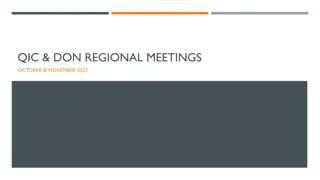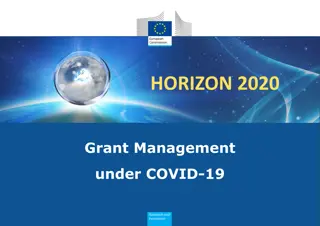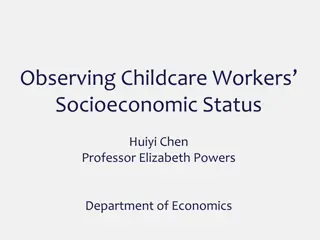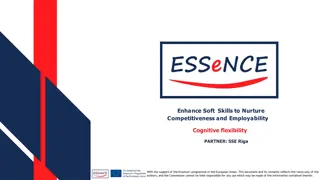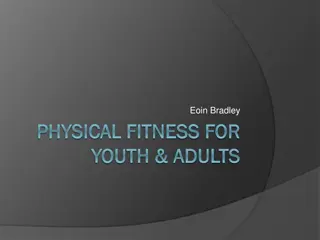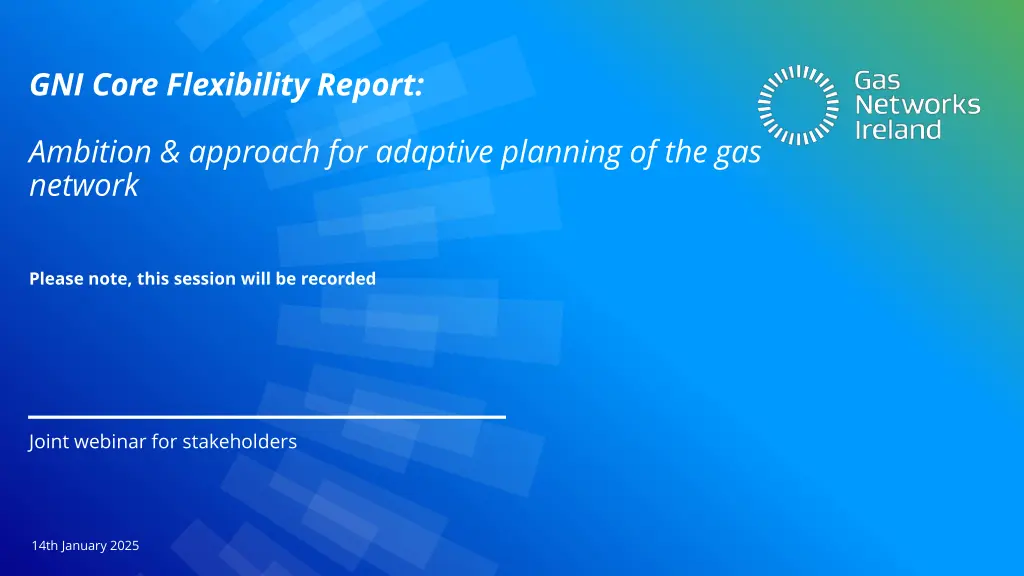
Gas Network Adaptive Planning: GNI Core Flexibility Report Insights
Explore GNI's Core Flexibility Report introducing their approach to adaptive planning in the gas network for stakeholder consultation. Discover the background, reporting requirements, and webinar introduction for this crucial project.
Download Presentation

Please find below an Image/Link to download the presentation.
The content on the website is provided AS IS for your information and personal use only. It may not be sold, licensed, or shared on other websites without obtaining consent from the author. If you encounter any issues during the download, it is possible that the publisher has removed the file from their server.
You are allowed to download the files provided on this website for personal or commercial use, subject to the condition that they are used lawfully. All files are the property of their respective owners.
The content on the website is provided AS IS for your information and personal use only. It may not be sold, licensed, or shared on other websites without obtaining consent from the author.
E N D
Presentation Transcript
GNI Core Flexibility Report: Ambition & approach for adaptive planning of the gas network Please note, this session will be recorded Joint webinar for stakeholders 14th January 2025
Agenda 11:00 11:05: Welcome 11:05 11:10: GNI Core Flexibility Project Introduction 11:10 11:35: GNI Approach and Material for Consultation 11:35 11:40: Next Steps 11:40 12:00: Q&A Session 2
Webinar Introduction The purpose of this webinar is to: Introduce the Core Flexibility Report Present the process of adaptive planning and GNI s approach for the development of the first iteration and longer term road map Invite feedback and address questions from stakeholders on questionnaires circulated to date. This stakeholder engagement process is your opportunity to provide input for the development of the Core Flexibility Report by giving: Insight into trigger points. Feedback on parameters used for our energy system models.
GNI Core Flexibility Report Project Introduction
Background The Price Control 5 (PC5) Decision set the revenues that GNI can collect from its customers from October 2022 to September 2027, together with the set of incentives and obligations placed upon GNI. The CRU introduced the new Flexibility and Adaptability Incentive. The objective of this incentive is for GNI to demonstrate how it has adopted a flexible and adaptive planning approach to system operation and network planning in delivering its PC5 investment plans, to best deliver on long-term energy system needs in the context of the uncertainty of supply and demand and other factors impacting the gas network. Performance Incentive Flexibility and Adaptability Incentive Report Frequency 1st Iteration 1. Core Flexibility Report (CFR) 1. Biennial (alternating to NDP*) 2. Biennial (same year as the NDP*) Jan 2026 2. Supplemental Flexibility Report (SFR) May 2026 *The Network Development Plan (NDP) is moving to a biennial publication after NDP 2024, with next issue in 2026
Flexibility and Adaptability Incentive Reporting Requirements Core Flexibility Report CFR should acknowledge and respond to the key policy / sector changes that GNI expect in the medium to long-term (covering at least the next 10-year period) and should describe a central plan / pathway for the development of the gas network. This should include a series of actions which must be taken given known policy goals, along with trigger points, which when met will require GNI to adapt its approach. Supplemental Flexibility Report The SFR is expected to be less detailed than the CFR and instead to provide an update on the year following the publication of the CFR. The information produced should cover similar backwards-looking information to that of the CFR, but without as much information on forward looking elements. CRU Decision on the PC5 Regulatory Framework 6
Timeline for the Core Flexibility Report development Q4 2024 Q4 2025: GNI Framework Implementation and final report Q2 2024 - Present: GNI Framework development 30th June 2023: CEPA recommendations for CRU 20th December 2023: CRU Decision Paper on PC5 Regulatory Framework 16th December 2024: CRU Decision on Price Control 5 Regulatory Framework Implementation 7
What has been asked of GNI to deliver in an adaptive planning report? The report is tied to a clear and unified underlying gas network strategy. Ambition A set of well justified supply and demand scenarios for the gas network based on energy policy and industry developments, min. 10-15 year outlook. A clear list of assumptions. Scenario A demonstration of low regrets investments for the gas network based on adaptve pathways, producing a central plan. A list of trigger and decision points that would cause GNI to change the central plan, along with proposed changes to the core pathway. Pathways Define milestones to monitor trigger points and metrics to evaluate GNI s adaptive planning performance. Monitoring GNI consider whole system implications of the adaptive pathways, with meaningful stakeholder engagement. Engagement 8
Summary CFR Roadmap 3. Institutionalise Adaptive Planning Best Practice Continue to embed adaptive planning processes across the organisation, seeking a consistent application of the processes. Align Core Flexibility Report with next iteration of Network Development Plan (2026). 2. Adaptive Planning Adoption Start to build capability and embed adaptive planning processes to ultimately develop the first issue of the Core Flexibility Report 2026 2025 OUTPUT: CORE FLEXIBILITY REPORT First Issue OUTPUT: SUPPLEMENTAL FLEXIBILITY REPORT 5. Future Horizons Seek opportunities to increase the maturity of the adaptive planning process across GNI, for example moving into a position of agile responses to external triggers & the application of market context in decision making processes . 2027 2024 : OUTPUT: CORE FLEXIBILITY REPORT Future Iterations Developing Maturity & Complexity 4. Drive Value & Sector Coupling Work to align further with EirGrid, particularly expanding the ambition & scope from the first issue of the report with full suite of scenarios & pathways for Future State. 1. Adaptive Planning Foundations Develop adaptative planning processes, building upon current GNI practice, and achieve buy-in from CRU & GNI Leadership on the approach to develop the first Core Flexibility Report. 2027+ OUTPUT: CORE FLEXIBILITY REPORT Second Issue OUTPUT: CORE FLEXIBILITY REPORT Outline Plan
GNI Core Flexibility Report Approach
What is adaptive planning? Adaptive Planning is an iterative framework for decision-making in uncertainty. Avoids commitment to one single long-term plan. Allows for flexibility to switch between actions creating a strategy that can evolve over time. Adaptive Pathways are a specific adaptive planning approach to achieve the long-term strategy or goal. Takes various forms, but typically based on a decision tree with thresholds and trigger points. Each route in a decision tree forms an adaptive pathway that can be implemented as conditions evolve. Relies on monitoring and evaluation of conditions and trigger points over time. 11
Adaptive Planning Steps Assessment of how / when the pathways need adjusting in the face of trigger points Pathways: Scenarios: Core pathway: Actions and investments taken to meet ambition under current conditions. Alternative pathway: Actions and investments taken to meet ambition under different scenarios. Helps identify low- and no-regret actions and investments Plausible futures, yet extreme scenarios that an organisation must be resilient and adaptable to. 12
What are trigger points? Trigger Points The conditions under which a decision must be made to move/shift to an alternative pathway. For example: Delay in delivering offshore wind capacity targets Operation support schemes for produciton of biomethane New government policy e.g. hydrogen in heating Decisions to shift to an alternative pathway or stay on current pathway based on specific trigger points. 13
Phase 1 approach for Adaptive Planning Core pathway will be linked to GNI strategy. Short- to medium-term will be aligned with Best Estimate scenario from the Network Development Plan Medium- to long-term will be aligned with Pathway to a Net Zero Carbon Network strategy adapted for National Hydrogen Strategy Trigger points to identify alternative pathways off core pathway only Pathways associated 2-3 alternative scenarios 14
What is the benefit of adaptive planning? The aim of adaptive planning is more robust long- term planning with more focus on low regret investments. Adaptive planning can facilitate the delivery of solutions that more closely reflect what later turns out to be required than building large infrastructure now on the basis of uncertain assumptions about the future. Ofwat Long Term Delivery Strategy Source: Ofwat Long Term Delivery Strategy 15
Modelling Approach and Material for Consultation 16
Holistic energy system approach Step 3: System needs assessment Step 1: Defining the Scenarios Step 2: Model building Ambition Trigger Points Natural gas / Biomethane Input Electricity Parameters Transmission Distribution Hydrogen Scenarios Natural gas / Biomethane Natural gas / Biomethane Hydrogen Core & Alternative Pathways 17
Feedback on identified trigger points GNI are seeking feedback from stakeholders on identified trigger points, specifically relating to developments within: Policy direction Economic developments Social aspects Technology advancements Legal issues Environmental concerns Triggers points will be used to identify, model and analyse alternative pathways. Priority to highest rated trigger points (in terms of impact and likelihood). To this end, you should have received a questionnaire GNI Trigger points for adaptive planning where you can provide your own assessment of relevant trigger points and provide any additional feedback to any given trigger point. 18
Feedback on Modelling input parameters GNI are seeking feedback from stakeholders on technical and economic inputs to our model, specifically relating to: Hydrogen production Biomethane production Renewable electricity capacity and generation Thermal electricity generation Energy storage Energy infrastructure Carbon capture and storage (CCS) Fuel costs and emission factors To this end, you should have received a questionnaire GNI Input parameters for model building where you can provide your feedback and comments on the proposed input values chosen. TYNDP 2024 data SEM data DEA Technology catalogue CFR input parameters for long-term model 19
Next steps 20
High level timeline for first iteration Q2-Q4 2024 Framework Q4 2024 Q2 2025 Core & alternative pathway development Q2 2026: 2027 cycle start-up Q2-Q3 2025 System needs assessment Q1 2026: Reflection & feedback Q3 2025: Drafting main report Q1 2026: Final publication Q4 2025 Internal approval & public consultation 21
What is to be expected in coming time? Late December 2024: Sending out questionnaires on trigger points and modelling input parameters. Mid to Late January: Individual meetings with key stakeholders to discuss feedback. End 2025 30 day public consultation on CFR draft report. 14th January 2025: Webinar on GNI s plans to deliver adaptive planning. 31st January 2025 Deadline for feedback on trigger points and model input parameters. 22
Q&A Session 23
Thank you for joining! Core Flexibility query: networkforecasting@gasnetworks.ie General query: stakeholder@gasnetworks.ie 24


